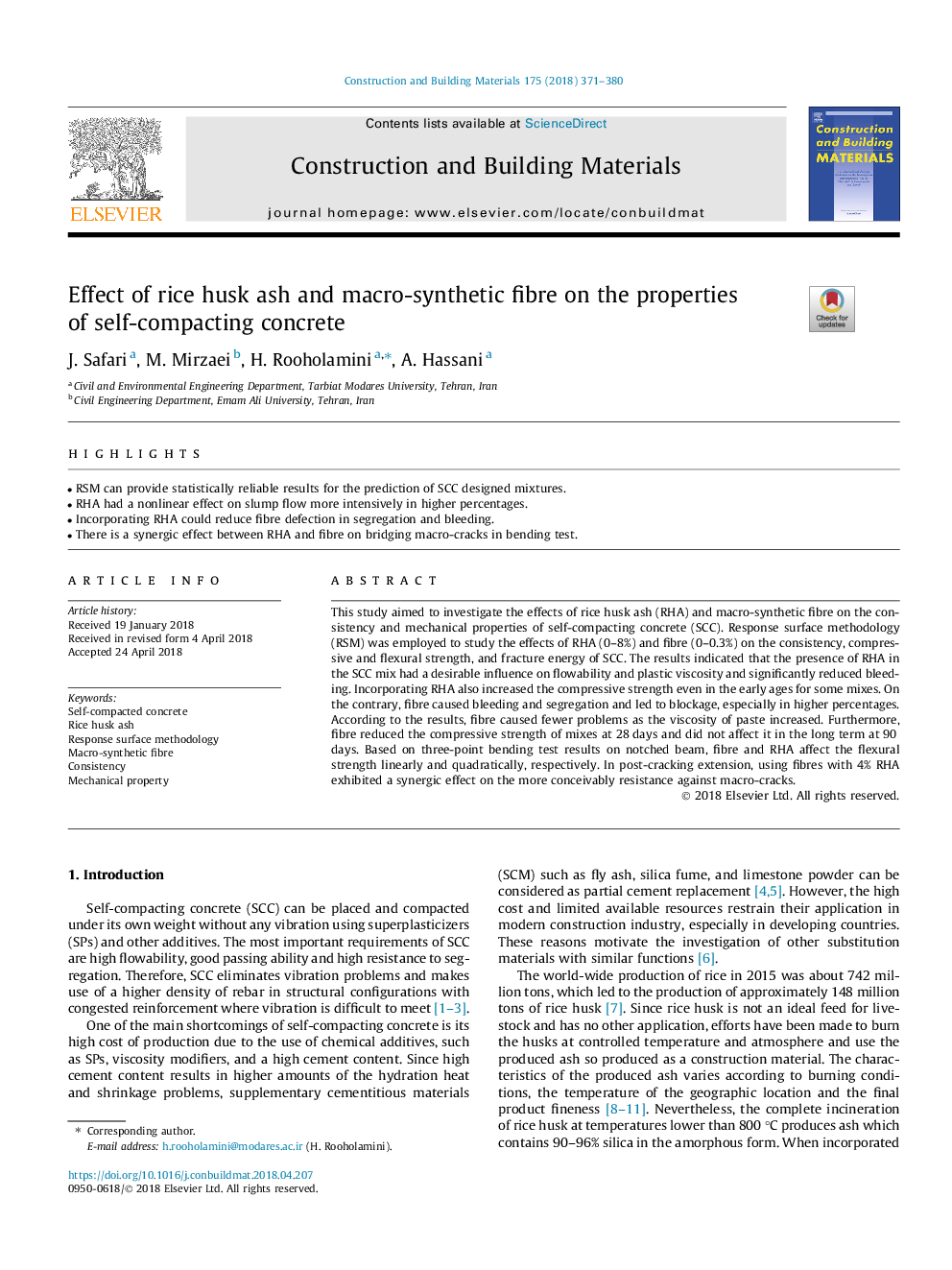| Article ID | Journal | Published Year | Pages | File Type |
|---|---|---|---|---|
| 6713482 | Construction and Building Materials | 2018 | 10 Pages |
Abstract
This study aimed to investigate the effects of rice husk ash (RHA) and macro-synthetic fibre on the consistency and mechanical properties of self-compacting concrete (SCC). Response surface methodology (RSM) was employed to study the effects of RHA (0-8%) and fibre (0-0.3%) on the consistency, compressive and flexural strength, and fracture energy of SCC. The results indicated that the presence of RHA in the SCC mix had a desirable influence on flowability and plastic viscosity and significantly reduced bleeding. Incorporating RHA also increased the compressive strength even in the early ages for some mixes. On the contrary, fibre caused bleeding and segregation and led to blockage, especially in higher percentages. According to the results, fibre caused fewer problems as the viscosity of paste increased. Furthermore, fibre reduced the compressive strength of mixes at 28â¯days and did not affect it in the long term at 90â¯days. Based on three-point bending test results on notched beam, fibre and RHA affect the flexural strength linearly and quadratically, respectively. In post-cracking extension, using fibres with 4% RHA exhibited a synergic effect on the more conceivably resistance against macro-cracks.
Related Topics
Physical Sciences and Engineering
Engineering
Civil and Structural Engineering
Authors
J. Safari, M. Mirzaei, H. Rooholamini, A. Hassani,
